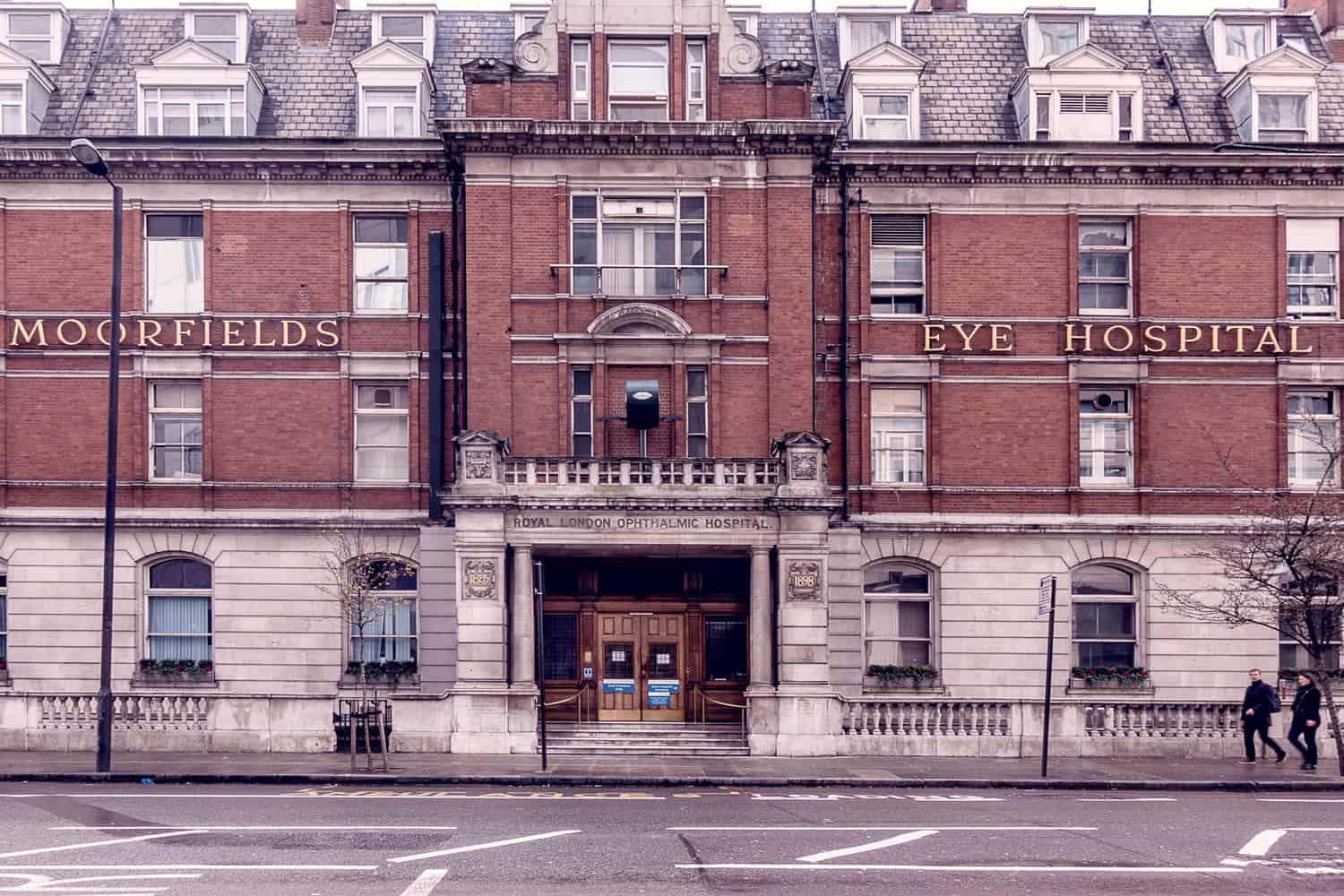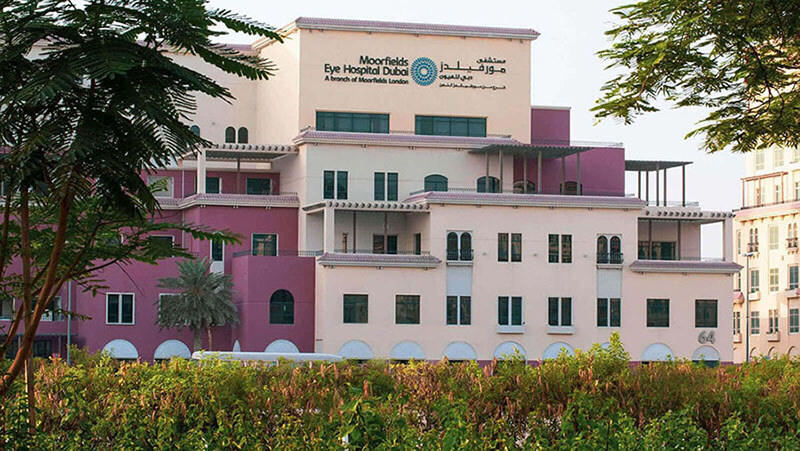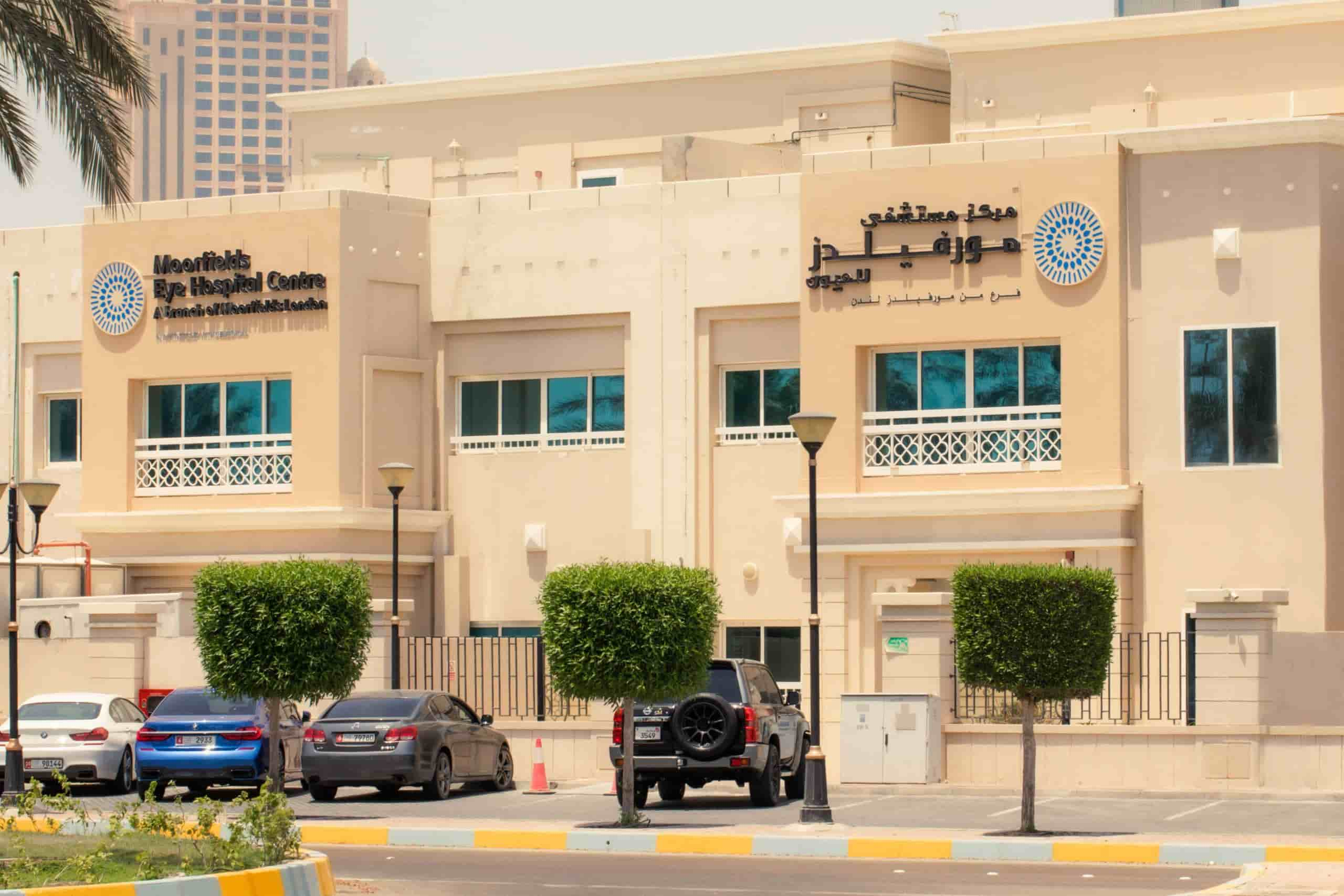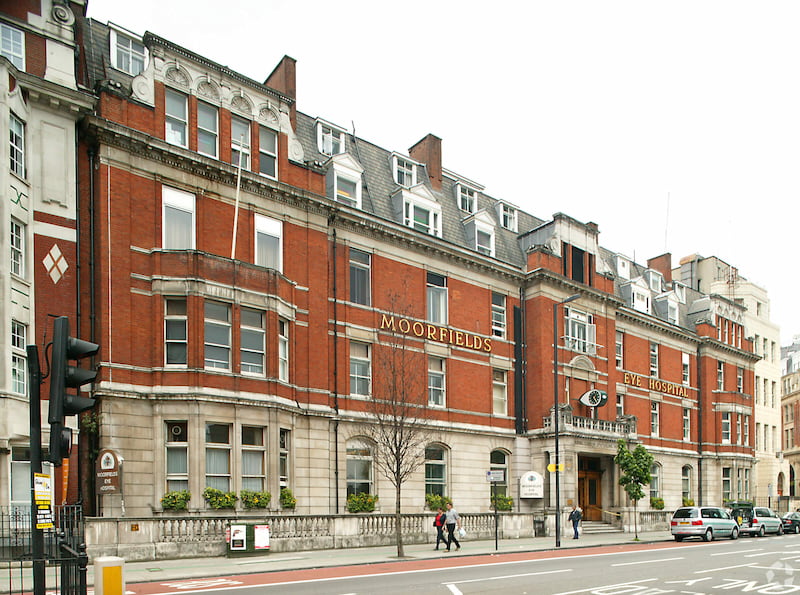International Patients
Welcome to Moorfields Eye Hospitals Dubai and Abu Dhabi, centers of eye care excellence with a heritage rooted in the world’s oldest eye hospital.
Equipped with state-of-the-art technology and staffed by leading ophthalmic specialists, our facility offers unparalleled care to a diverse international clientele. Whether you seek advanced diagnostics, complex surgical solutions, or innovative vision correction, trust our experts to deliver superior treatments tailored to your unique needs in a warm, comforting environment designed with your well-being in mind.

Airlines
Internationally recognised for their service and accessibility from most major cities worldwide, these Dubai based airlines website can be visited here:
Hotels
Moorfields Eye Hospital Dubai is walking distance to several hotels, some of these include:
5-star hotels
- Sofitel Dubai The Obelisk: 1 Km away
- Mövenpick Hotel & Apartments Bur Dubai: 2.3Km away
- Hyatt Regency Dubai Creek Heights: 1.7Km away
4-star hotel
3-star hotel
Our Services
Adult & paediatric cataracts
Adult & paediatric cataracts
Adult & Paediatric Glaucoma
Adult & Paediatric Glaucoma
Adult & Paediatric Squint
About Squint (Strabismus)
A squint, medically known as strabismus, is a condition where the eyes are misaligned and do not look in the same direction. One eye may turn inwards, outwards, upwards, or downwards while the other remains focused. This misalignment affects both children and adults, though its causes and implications may differ depending on age.
In children, a squint often develops due to an imbalance in the muscles controlling the eyes, leading to poor coordination between them. If left untreated, it can cause amblyopia, or “lazy eye,” where the brain begins to favour one eye, potentially impairing vision in the affected eye. Early detection, including glasses, eye patches, or surgery, is crucial for successful treatment.
In adults, strabismus can arise from trauma, neurological conditions, or illnesses like stroke or diabetes. It may cause double vision, headaches, or eye strain, affecting daily activities and quality of life. Treatment options include corrective lenses, vision therapy, or surgery, depending on the underlying cause.
Effective management of squint is vital for improving visual function and overall eye health in children and adults.
At Moorfields Eye Hospitals UAE, our highly qualified adult and paediatric squint surgeons have extensive experience diagnosing and treating all forms of squint.
Adult & Paediatric Squint
About Squint (Strabismus)
A squint, medically known as strabismus, is a condition where the eyes are misaligned and do not look in the same direction. One eye may turn inwards, outwards, upwards, or downwards while the other remains focused. This misalignment affects both children and adults, though its causes and implications may differ depending on age.
In children, a squint often develops due to an imbalance in the muscles controlling the eyes, leading to poor coordination between them. If left untreated, it can cause amblyopia, or “lazy eye,” where the brain begins to favour one eye, potentially impairing vision in the affected eye. Early detection, including glasses, eye patches, or surgery, is crucial for successful treatment.
In adults, strabismus can arise from trauma, neurological conditions, or illnesses like stroke or diabetes. It may cause double vision, headaches, or eye strain, affecting daily activities and quality of life. Treatment options include corrective lenses, vision therapy, or surgery, depending on the underlying cause.
Effective management of squint is vital for improving visual function and overall eye health in children and adults.
At Moorfields Eye Hospitals UAE, our highly qualified adult and paediatric squint surgeons have extensive experience diagnosing and treating all forms of squint.
Adult cataract
About Adult cataract
A cataract is a condition where the eye’s natural lens becomes cloudy, reducing the amount of light that reaches the retina. This clouding can result in blurred or hazy vision and, in more severe cases, lead to vision impairment or loss of sight. People with cataracts often find that colours appear less vibrant, and everyday activities like reading, driving, or recognising faces become more difficult. Cataracts typically develop slowly over time, and the early stages might not be noticeable until vision problems begin to interfere with daily life.
Adult cataract
About Adult cataract
A cataract is a condition where the eye’s natural lens becomes cloudy, reducing the amount of light that reaches the retina. This clouding can result in blurred or hazy vision and, in more severe cases, lead to vision impairment or loss of sight. People with cataracts often find that colours appear less vibrant, and everyday activities like reading, driving, or recognising faces become more difficult. Cataracts typically develop slowly over time, and the early stages might not be noticeable until vision problems begin to interfere with daily life.
Adult Glaucoma
About Adult Glaucoma
The eye produces a nourishing fluid called the aqueous humour. This fluid circulates around the tissues of the eye and drains away through outflow channels. ‘Normal’ Eye pressure is when the amount of fluid produced is balanced by the amount of fluid draining away. If the fluid in the eyes is not ‘balanced’ then the pressure inside the eye rises and this can lead to a glaucoma.
Glaucoma, if left untreated, causes damage to the optic nerve at the back of the eye, ultimately resulting in loss of vision.
Adult Glaucoma
About Adult Glaucoma
The eye produces a nourishing fluid called the aqueous humour. This fluid circulates around the tissues of the eye and drains away through outflow channels. ‘Normal’ Eye pressure is when the amount of fluid produced is balanced by the amount of fluid draining away. If the fluid in the eyes is not ‘balanced’ then the pressure inside the eye rises and this can lead to a glaucoma.
Glaucoma, if left untreated, causes damage to the optic nerve at the back of the eye, ultimately resulting in loss of vision.
Adult Squint (Strabismus)
Adult squint, or strabismus, occurs when the eyes do not align properly. Although often associated with children, it affects about 4% of adults and can be caused by a range of factors.
In adults with a squint, one eye looks straight while the other may drift inwards, outwards, upwards, or downwards, leading to symptoms such as double vision, eye strain, headaches, reduced depth perception, and blurred vision. The visible misalignment can also impact social interactions and self-confidence.
Early diagnosis and treatment of adult squint can significantly improve vision and quality of life. At Moorfields Eye Hospitals Dubai and Abu Dhabi, our expert team uses advanced techniques to effectively diagnose and treat adult squint.
Adult Squint (Strabismus)
Adult squint, or strabismus, occurs when the eyes do not align properly. Although often associated with children, it affects about 4% of adults and can be caused by a range of factors.
In adults with a squint, one eye looks straight while the other may drift inwards, outwards, upwards, or downwards, leading to symptoms such as double vision, eye strain, headaches, reduced depth perception, and blurred vision. The visible misalignment can also impact social interactions and self-confidence.
Early diagnosis and treatment of adult squint can significantly improve vision and quality of life. At Moorfields Eye Hospitals Dubai and Abu Dhabi, our expert team uses advanced techniques to effectively diagnose and treat adult squint.
Comprehensive Assessments
We offer a comprehensive range of eye care assessments, diagnostics, and surgical and non-surgical treatment services.
Assessment services: (evaluation examinations may differ depending on outcome of consultation)
- General Health Assessment
- Vision screening
- Visual Field
- OCT Disk
- Pachemetry
- UBM
- Consultation with Glaucoma Consultant
- General Health Assessment
- Optometry assessment
- Orthoptic assessment
- Consultation with Ophthalmology Consultant
- Consultation with Oculoplastic consultant
- Consultation with Ocularist
- Fully custom made artificial eye creation
- Fitting of artificial eye
- Orthoptic assessment
- Optometry assessment
- Binocular Esterman visual fields
- Consultation with GCAA licensed Ophthalmologist
- General Health Assessment
- Optometry assessment
- Pentacam
- Consultation with Cornea and Laser Refractive Consultant
- General Health Assessment
- Optometry assessment
- Pentacam
- Cell count
- Consultation with Retina Consultant
- General health Assessment
- OCT
- Genetic testing
- Consultation with Genetic Eye Disease Consultant
- General Health Assessment
- Optometry assessment
- Pentacam
- Consultation with Cornea and Laser Refractive Consultant
- General Health Assessment
- Optometry assessment
- Pentacam
- Cell count
- Consultation with Retina Consultant
- General Health Assessment
- Optometry assessment
- Visual Field
- OCT
- Consultation with Neuro-Ophthalmology Consultant
- Consultation with Ocular Oncologist
- General health assessment
- General Health Assessment
- Optometry assessment
- Orthoptic assessment
- Consultation with Paediatric Ophthalmology Consultant
- General Health Assessment
- Vision screening
- Color Fundus Photos of the Retina
- OCT of the Macula
- Ultrasound
- UBM
- Electrophysiology (ERG)
- Consultation with Retina Consultant
- General Health Assessment
- Vision screening
- Optos wide Field color photos
- Optos wide fields RF & IR
- Ultrasound
- UBM
- Electrophysiology (ERG)
- Consultation with Retina Consultant
- General Health Assessment
- Vision screening
- Color Fundus photos (Heidelberg)
- IR & Auto-fluorescence (AF) Fundus photos (Heidelberg)
- OCT scan
- OCTA
- Ultrasound
- UBM
- Electrophysiology (ERG)
- Consultation with Retina Consultant
Please fill the form below and our team will contact you shortly. Thank you for choosing Moorfields Eye Hospitals UAE.



